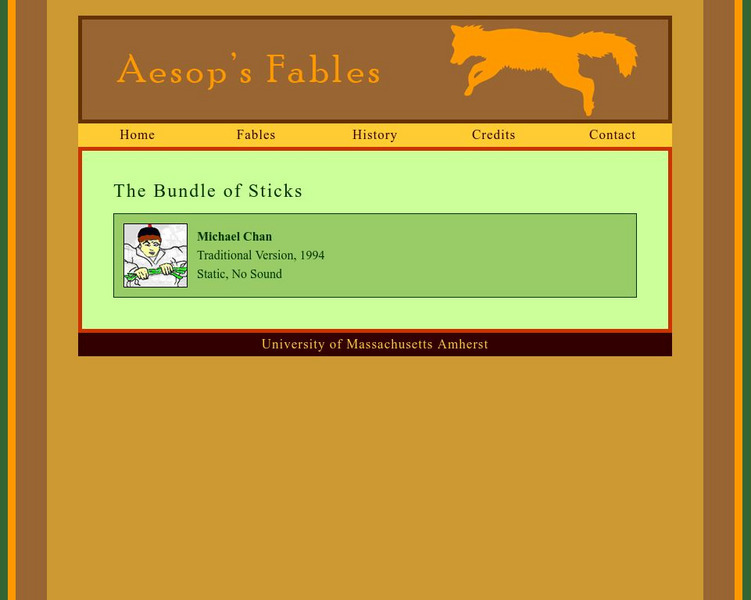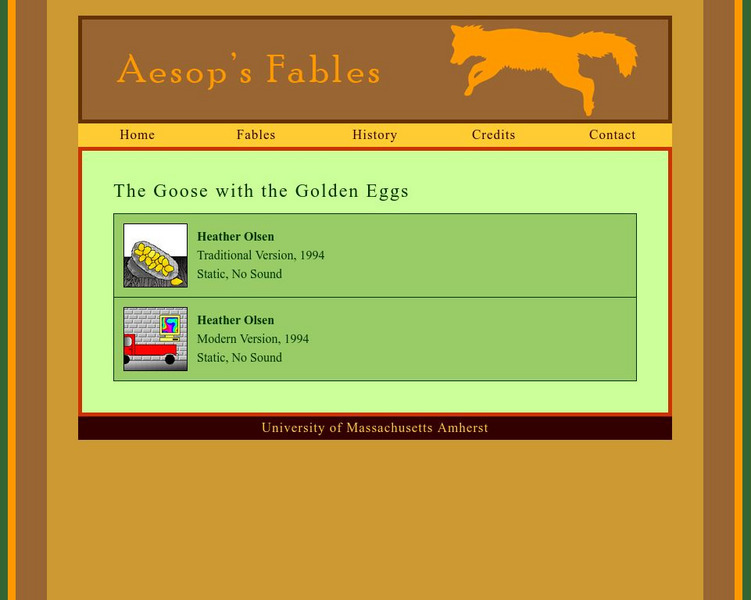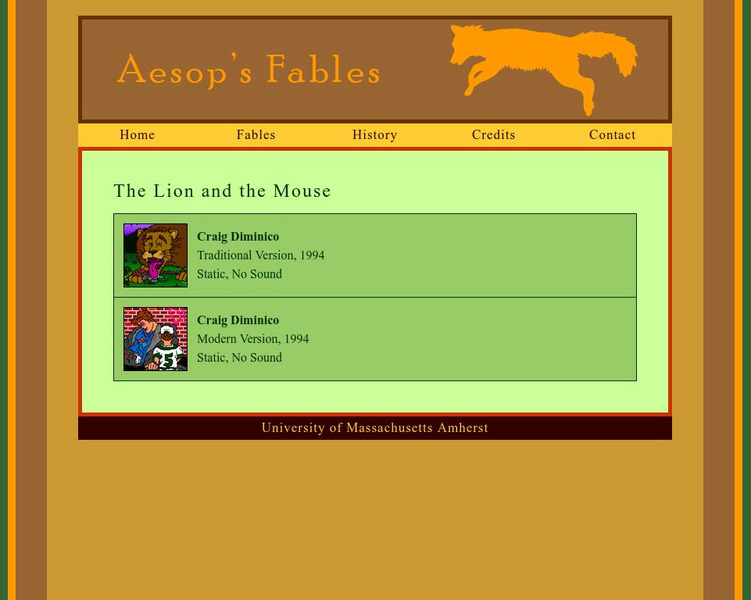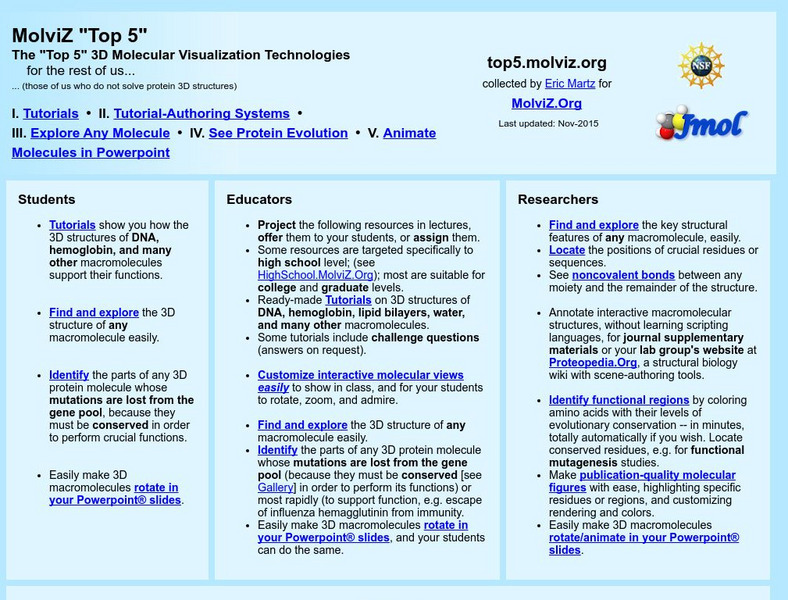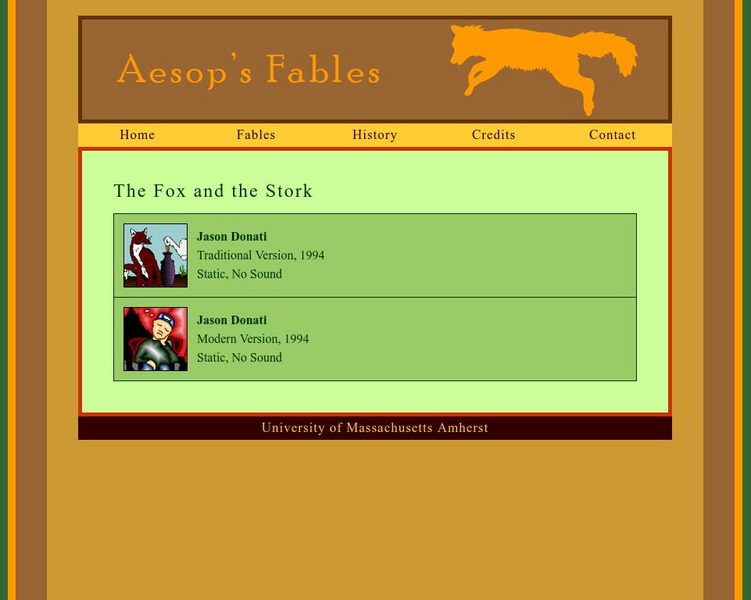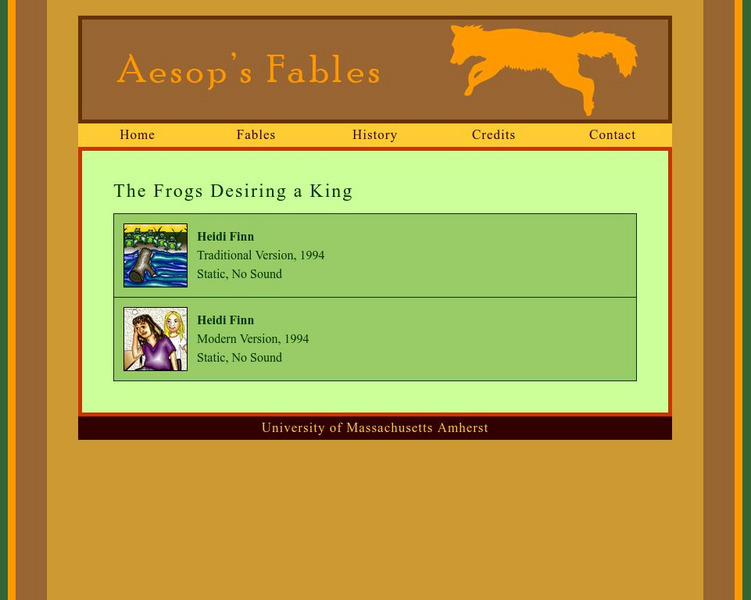University of Massachusetts
Aesop's Fables: "The Donkey and the Lap Dog"
Learn that sometimes not all jokes are funny in Aesop's tale "The Donkey and the Lap Dog." The story is offered in its traditional version as well as a more modernized rendition. Slideshow pacing encourages independent reading.
University of Massachusetts
Aesop's Fables: The Bundle of Sticks
Read this beautifully illustrated fable of Aesop, "The Bundle of Sticks." Illustrated by college student, Michael Chan, the story progresses to its moral and meaning, "union gives strength". Also find the history of Aesop and his fables,...
University of Massachusetts
University of Massachusetts: Aesop's Fables: "The Goose With the Golden Eggs"
Two retellings of Aesop's Fable "The Goose with the Golden Eggs." Both stories illustrate the same moral, "Greed often overreaches itself." The first is a traditional retelling of the original fable. The second is a modern retelling with...
University of Massachusetts
University of Massachusetts: Aesop's Fables: "The Lion and the Mouse"
Read this traditional fable of "The Lion and the Mouse" to learn that even little friends can do great things. Two illustrated versions are provided. Both include the same text, but one has traditional illustrations while the other has...
University of Massachusetts
University of Massachusetts: Aesop's Fables: "The Man and the Satyr"
Read and view illustrations for a traditional and then a modern-day retelling of Aesop's fable "The Man and the Satyr."
University of Massachusetts
University of Massachusetts: Aesop's Fables: "The Milkmaid and Her Pail"
Read a traditional retelling of the fable "The Milkmaid and Her Pail" to see how the milkmaid learned not to count her chickens before they hatch. Then, read the same tale in a modern-day setting for a different perspective.
University of Massachusetts
University of Massachusetts: Aesop's Fables: "The Miser and His Gold"
Read this illustrated fable "The Miser and His Gold" to learn about a man who valued his money for the wrong reasons. Then read the same tale with different illustrations for a new perspective.
University of Massachusetts
University of Massachusetts: Aesop's Fables: "The Wind and the Sun"
Learn about the power of kindness while reading this illustrated fable "The Wind and the Sun." Then read the same story with different illustrations to provide a new point of view.
University of Massachusetts
University of Massachusetts: Aesop's Fables: "The Wolf in Sheep's Clothing"
Read the illustrated fable "The Wolf in Sheep's Clothing" to learn that things are not always the way they look on the outside. Then read the same fable with modern illustrations to see a different perspective and make connections.
University of Massachusetts
University of Massachusetts: Rasmol & Chime
This site from the University of Massachusetts links to downloadable freeware (Rasmol and CHIME) which are required to view 3-D images common on organic chemistry tutorials.
University of Massachusetts
University of Massachusetts: Aesop's Fables: "The Fox and the Grapes"
Two traditional retellings of Aesop's fable "The Fox and the Grapes." The first has literal illustrations of the original fable. The second tells the same story, but has illustrations that give the story a modern setting and characters...
University of Massachusetts
University of Massachusetts: Aesop's Fables: "The Fox and the Stork"
Read two versions of Aesop's fable "The Fox and the Story." Both versions have the same text, but one has traditional illustrations while the other provides a modern interpretation through the illustrations.
University of Massachusetts
University of Massachusetts: Aesop's Fables: "The Frog and the Ox"
Students can learn a lesson about how being overly concerned with yourself can lead to negative consequences by reading Aesop's fable "The Frog and the Ox." The first version provides literal illustrations for the fable, while the second...
University of Massachusetts
University of Massachusetts: Aesop's Fables: "The Frogs Desiring a King"
Two versions of Aesop's Fable with the same story, but different illustrations. The first provides literal illustrations of the story, while the second provides a more modern interpretation.



